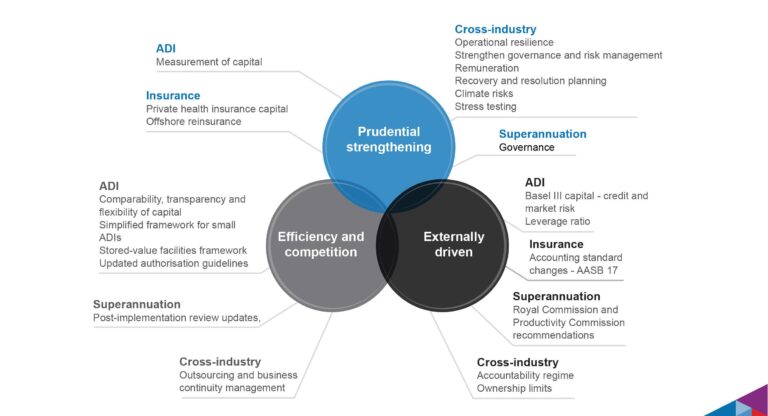Australia’s banking regulator has issued a cautionary warning that escalating geopolitical tensions may precipitate an increase in cyber attacks targeting the nation’s financial institutions. In a statement underscoring the growing risks, authorities highlighted the need for heightened vigilance and enhanced cybersecurity measures as global conflicts and political disputes continue to fuel a volatile threat landscape. This alert comes amid rising concerns over the intersection of international affairs and digital security, signaling potential challenges ahead for Australia’s banking sector.
Australian Banking Regulator Highlights Rising Cybersecurity Risks Amid Geopolitical Strains
The Australian Prudential Regulation Authority (APRA) has issued a stark warning regarding the escalating cybersecurity threats facing the nation’s banking sector. Amid intensifying geopolitical tensions globally, financial institutions are being urged to bolster their defenses against a growing array of sophisticated cyberattacks. APRA emphasized that threat actors are increasingly exploiting international conflicts to launch disruptive campaigns aimed at critical banking infrastructure.
Key vulnerabilities highlighted include:
- Supply chain weaknesses leveraged by adversaries
- Phishing and ransomware targeting customer data
- Advanced persistent threats (APTs) linked to state-sponsored entities
| Risk Factor | Potential Impact | Mitigation Strategy |
|---|---|---|
| Geopolitical Cyber Espionage | Data breaches & loss of sensitive info | Enhanced monitoring and threat intelligence |
| Ransomware Attacks | Operational disruption and financial loss | Regular backups and incident response plans |
| Third-party Vendor Risks | Supply chain compromise | Stringent vendor risk assessments |
Increased Threats Demand Enhanced Vigilance and Collaborative Defense Strategies
As geopolitical tensions escalate globally, the Australian banking regulator has issued a stark warning about a potential surge in cyber threats aimed at the nation’s financial institutions. The volatile international climate is creating a fertile ground for increasingly sophisticated cyber attacks, driving banks and financial entities to reevaluate their security protocols. Experts emphasize that no organization is immune, highlighting the imperative need for heightened vigilance and real-time threat intelligence sharing among all stakeholders in the financial sector.
To navigate this challenging landscape effectively, a collaborative defense approach is essential. Key measures being advocated include:
- Cross-sector information exchange: Facilitating rapid communication on emerging threats and vulnerabilities.
- Investment in advanced detection systems: Leveraging AI and machine learning to identify anomalous activities quickly.
- Regular security audits and stress testing: Ensuring preparedness against a variety of attack vectors.
- Public-private partnerships: Enhancing cooperation between government agencies and financial institutions.
| Strategy | Benefit |
|---|---|
| Real-time Threat Intelligence | Immediate identification of emerging risks |
| AI-Driven Security Tools | Improved anomaly detection and faster response |
| Collaborative Incident Response | Coordinated mitigation and reduced damage |
| Continuous Training Programs | Enhanced staff awareness and reduced human error |
Regulator Urges Financial Institutions to Strengthen Cyber Resilience and Incident Response Protocols
Amid rising geopolitical tensions, Australia’s primary banking watchdog has heightened its focus on the cyber resilience of financial institutions. The regulator is urging banks and related entities to bolster their defenses against increasingly sophisticated cyber threats. Emphasis has been placed on the urgent need to enhance incident response frameworks, ensuring rapid detection, containment, and mitigation of cyberattacks that could disrupt critical financial infrastructure.
Key areas highlighted for improvement include:
- Regular stress testing: Simulating cyberattack scenarios to evaluate readiness and response capabilities.
- Enhanced information sharing: Collaborating with government agencies and peer organizations to identify emerging threats early.
- Investment in cybersecurity technologies: Deploying advanced detection tools powered by artificial intelligence and machine learning.
- Comprehensive training programs: Ensuring staff are vigilant and prepared to address incidents promptly.
| Focus Area | Recommended Actions | Expected Outcomes |
|---|---|---|
| Incident Response | Develop clear protocols and conduct regular drills | Faster containment and reduced operational impact |
| Threat Intelligence | Establish real-time sharing channels | Improved anticipation of cyberattack vectors |
| Technology Upgrades | Implement AI-based monitoring tools | Early detection of anomalous activities |
| Employee Training | Conduct mandatory cybersecurity awareness sessions | Reduced risk of human error leading to breaches |
Insights and Conclusions
As geopolitical tensions continue to escalate globally, the Australian banking regulator’s warning underscores the growing cyber risks facing the financial sector. Institutions and consumers alike must remain vigilant as the threat landscape evolves, with coordinated efforts crucial to bolstering defenses against potential attacks. The situation serves as a timely reminder of the intersection between international affairs and cybersecurity, highlighting the need for robust safeguards in an increasingly interconnected world.




